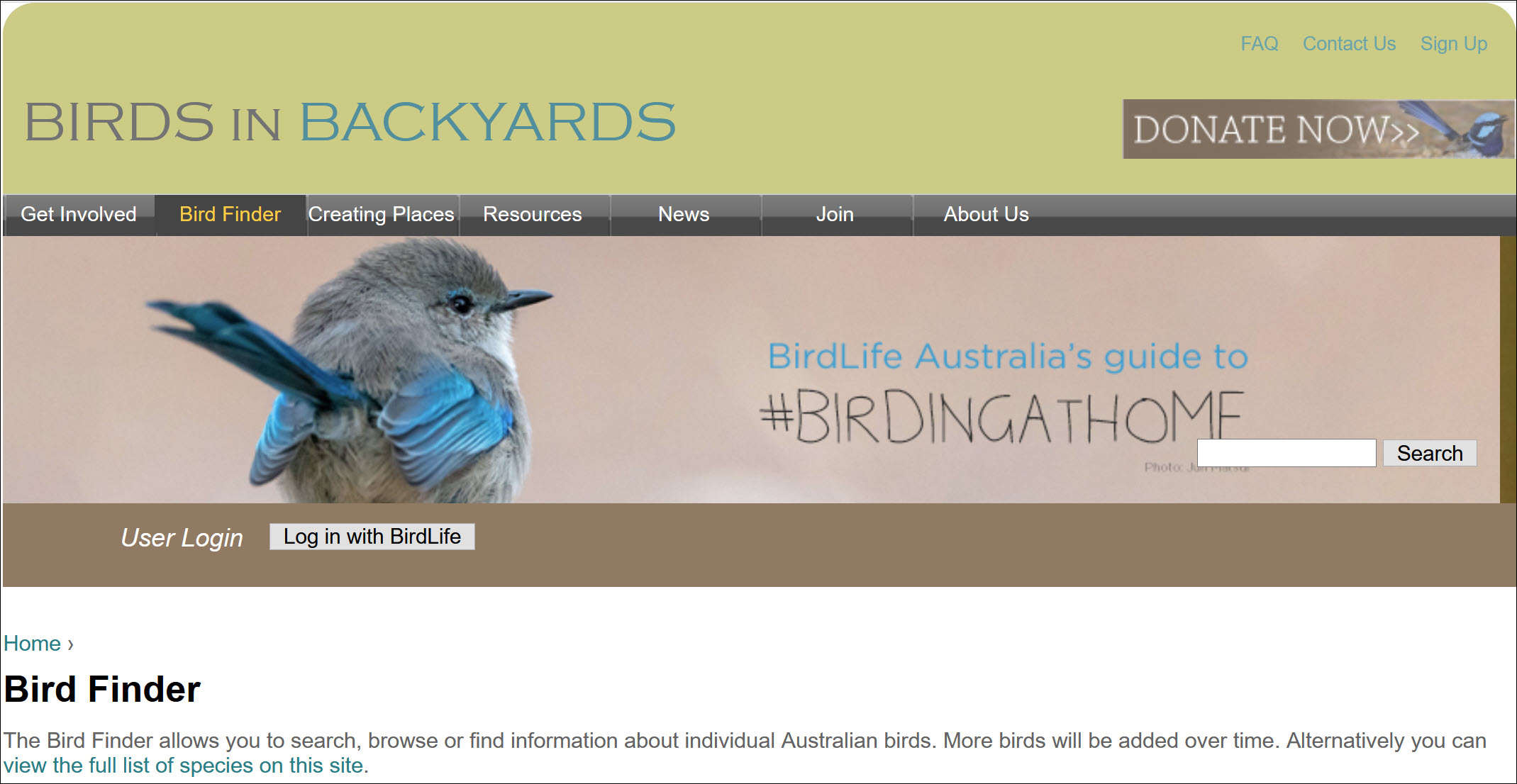 Birds in Backyards website
Birds in Backyards website
Birdlife Australia
scientific name index and common name index

The Birds in Backyards website is a research, education and conservation program of BirdLife Australia. It focuses on the birds that live where people live and has a great Bird Finder identification tool on its site.
The Birds in Backyards Program was the winner of the 2008 Alan Strom Eureka Prize for Environmental Education. The program is designed to address the loss of wild bird species, particularly small bird species, that live where people live.
It relies on the help of local communities to do its scientific research. The results are passed back to these communities and also used in community education.
The program has three main objectives:
- Research: To find out what influences bird diversity in gardens and yards, urban bush lands, parks and public areas.
- Education: To develop and increase community understanding and involvement with the current status of birds; to encourage a ‘hands on’ culture of planting for birds and of monitoring their presence and absence; to help people to learn how to love and live with birds
- Conservation: By putting into practice the information learnt from research, open spaces in places where people live, will also become suitable for birds to inhabit. This should contribute to a greater diversity of birds living in these places.
The Bird Finder tool
This tool allows you to identify common birds in backyards using simple questions.
- size
- shape
- colour
- distinctive features (of the eye, bill, face, tail, markings, etc.)
Each bird has its own web page, with pictures and information on identification, location and behaviour.
This is a great website to start your aspirations of identifying birds.
Website links
Website: Birds in Backyards
Tool: Bird Finder

